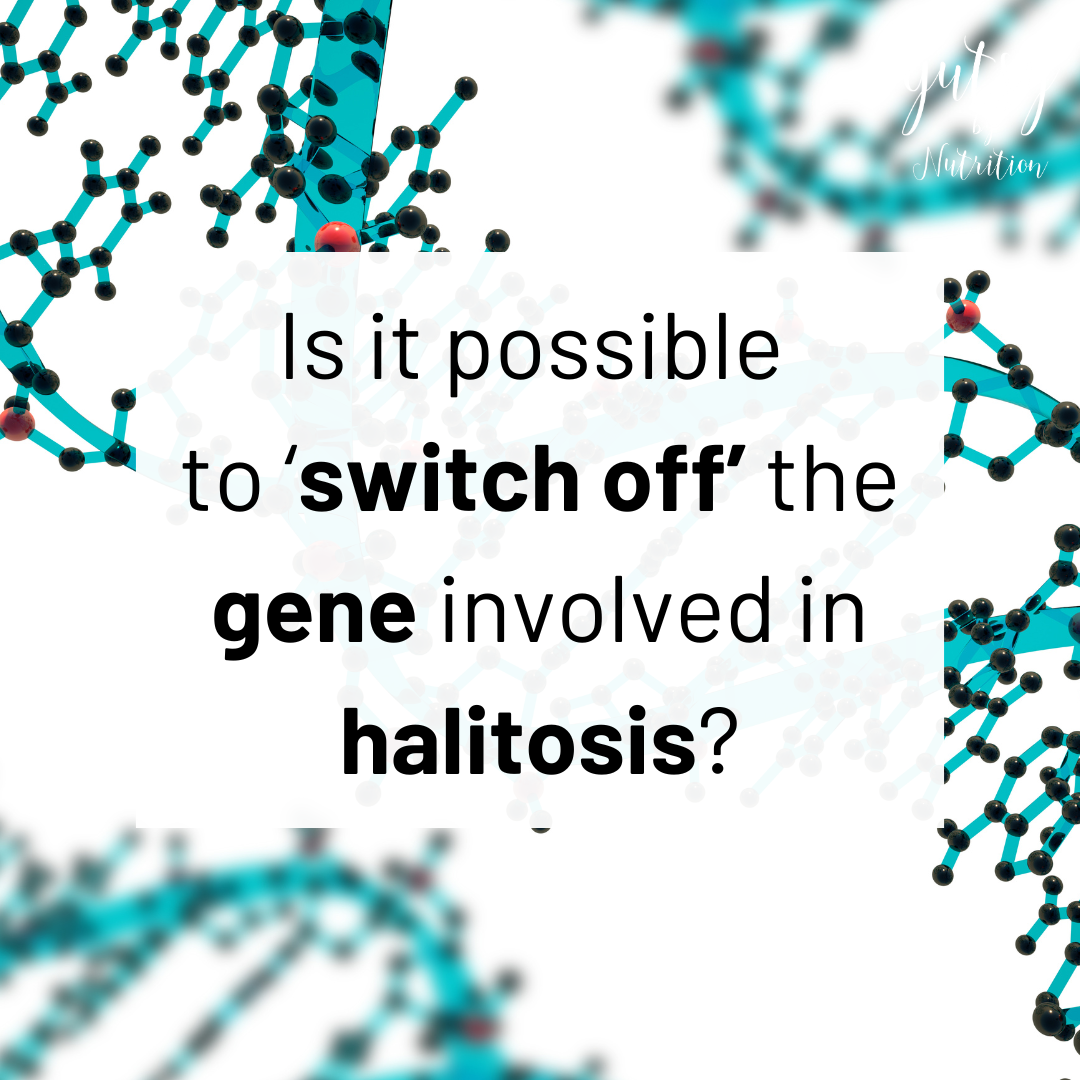Is it possible to 'switch off' the gene involved in halitosis?
about FMO3 & halitosis
The FMO3 gene plays a crucial role in extra-oral halitosis, particularly in a condition known as trimethylaminuria (TMAU).
The FMO3 gene, which encodes the enzyme flavin-containing monooxygenase 3 (FMO3), can be affected by various factors that can either reduce its expression or inhibit its activity.
These factors can be genetic, epigenetic (external like environmental), or pharmacological in nature. Here are some key factors that can switch off or down-regulate the FMO3 gene.
factors that impact fmo3 expression
Genetics
FMO3 and other genetics impacting halitosis can vary from person to person and might include
Genetic mutations – In the FMO3 gene can result in a non-functional enzyme or reduced enzyme activity. These mutations are a primary cause of trimethylaminuria (TMAU)
Polymorphisms – Or natural genetic variations in the FMO3 gene can lead to differences in enzyme. Some polymorphisms may reduce the activity of the enzyme without causing complete loss of function
Nonsense mutations – Create an early stop signal in the genetic code, causing the production of an incomplete and non-functional protein responsible for trimethylamine (TMA) conversion
Missense mutations – Result in amino acid changes that can alter enzyme structure and function, again impacting trimethylamine (TMA) conversion
Epigenetic Factors
Other factors may influence FMO3 expression
DNA Methylation – The addition of methyl groups to the DNA, particularly in the promoter region of the FMO3 gene, can inhibit its transcription. Increased DNA methylation typically reduces gene expression (not good)
Histone Modification – Changes in histone proteins, around which DNA is wound, can also affect gene expression. Histone acetylation is usually associated with active transcription (up regulation = good), while deacetylation can lead to gene silencing (down regulation = bad)
Environmental & Lifestyle Factors
A diet low in choline and carnitine does not directly alter the expression of a faulty FMO3 gene responsible for trimethylaminuria (TMAU). However, it can indirectly affect the symptoms of TMAU by reducing the substrates available for gut bacteria to produce trimethylamine (TMA), the malodorous compound associated with halitosis in TMAU
Chronic stress can influence gene expression through various pathways, including epigenetic modifications and hormonal changes that can affect metabolic processes
drugs & chemicals
Drugs and Chemicals – Some medications and chemicals can inhibit the activity of FMO3 by directly interacting with the enzyme or through indirect mechanisms that affect gene expression
Inducers – Conversely, some compounds can induce the expression of FMO3, though this is less common
Hormonal Regulation
Sex Hormones – Hormonal changes, particularly those related to sex hormones such as estrogen and progesterone, can influence the expression of the FMO3 gene. For example, some studies suggest that female hormones can exacerbate symptoms of TMAU due to their effect on FMO3 activity
the liver
Liver Diseases – Since the liver is the primary site of FMO3 activity, liver diseases can impact the enzyme’s function and expression. Conditions such as hepatitis, cirrhosis, fatty liver or liver cancer can reduce the liver’s overall capacity to metabolize TMA
Conclusion
The expression and activity of the FMO3 gene can be influenced by a range of factors, including genetic mutations, epigenetic modifications like environmental influences, hormonal changes, and certain medications and chemicals.
Understanding these factors is crucial for managing conditions like trimethylaminuria and developing targeted therapies to modulate FMO3 activity.

